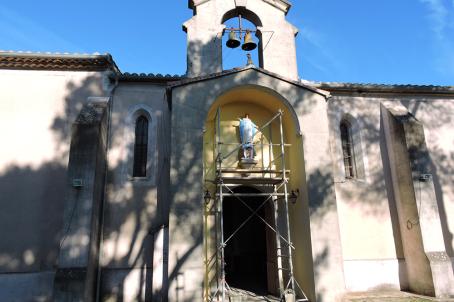Cathédrale Saint-Benoît
The Cathedral of Saint-Benoît or simply the Cathedral of Castres was first built in the 14th century, after the creation of the diocese of Castres in 1317, together with a number of other dioceses created in the region after the suppression of the Albigensians. This first building was destroyed during the French Wars of Religion. The present building was then constructed in the 17th and 18th centuries. The cathedral lost its title with the suppression of the diocese during the French Revolution.






